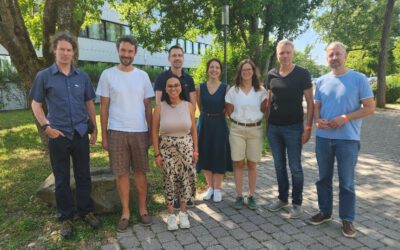A new paper led by the Dept. of Remote Sensing presents an in-depth insight into practical implementations of a fullwave LiDAR survey for deriving essential forest structural variables on landscape scale. Carried out in the entire territory of Bavarian Forest National Park in Germany, this work evaluated two fundamentally-different methods of forest inventory that use LiDAR data at the landscape level: the single tree segment-based method and an area-based method. A set of structural forest attributes were modeled by these methods with a conventional forest inventory of the highly heterogeneous forest landscape which partially includes stands affected by severe natural disturbances.
The single tree-based algorithm delivered highly reliable estimates of variables and their uncertainty for a set of forest structural attributes that are of interest in forest inventories at the landscape scale. This was also well correlated with the results obtained form traditional metric-based LiDAR models as well as with those form field-based forest inventory. Based on the obtained results, this work recommends LiDAR forest inventories at the landscape scale in both heterogeneous commercial forests and large protected areas in the central European temperate sites.








